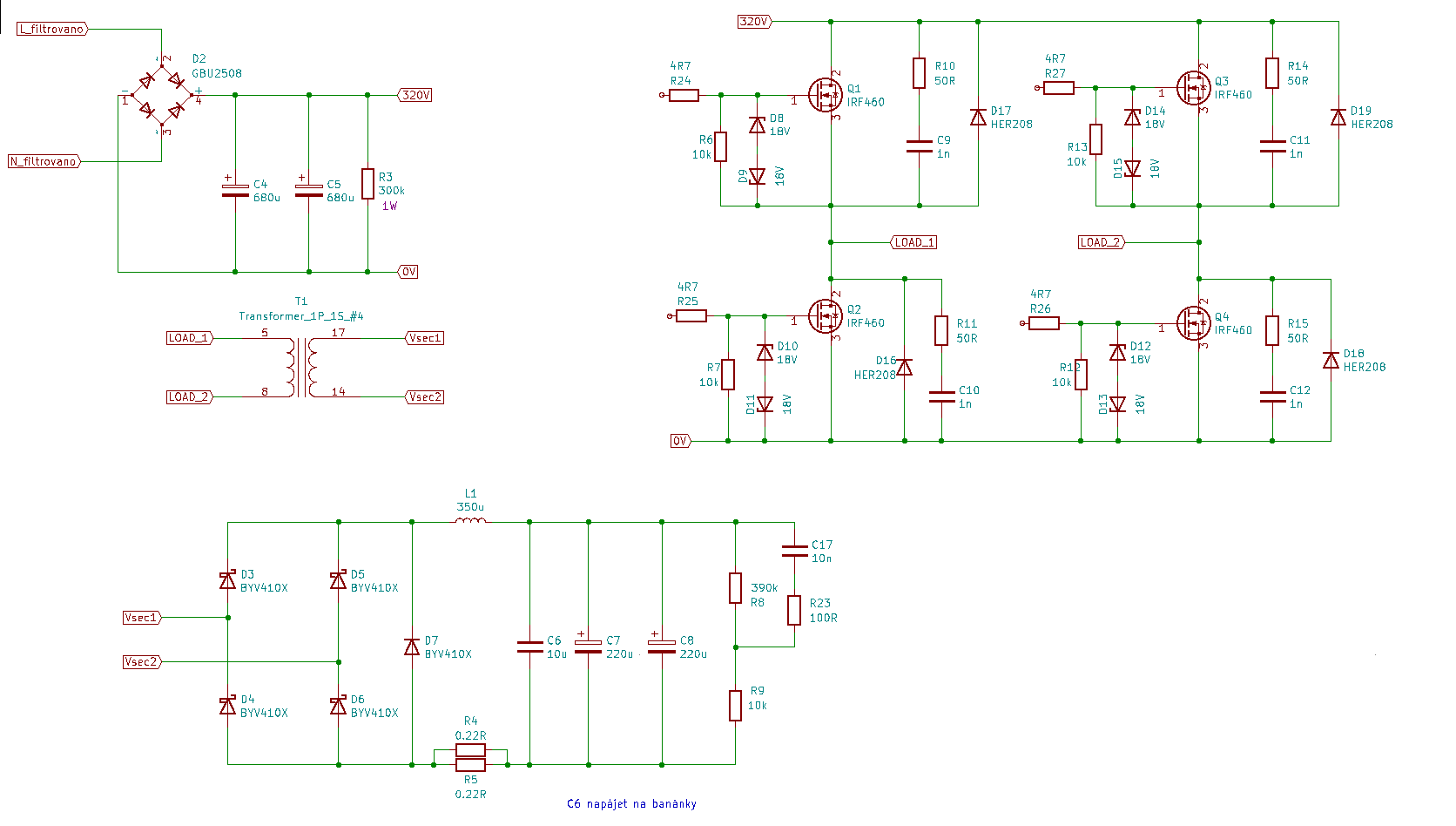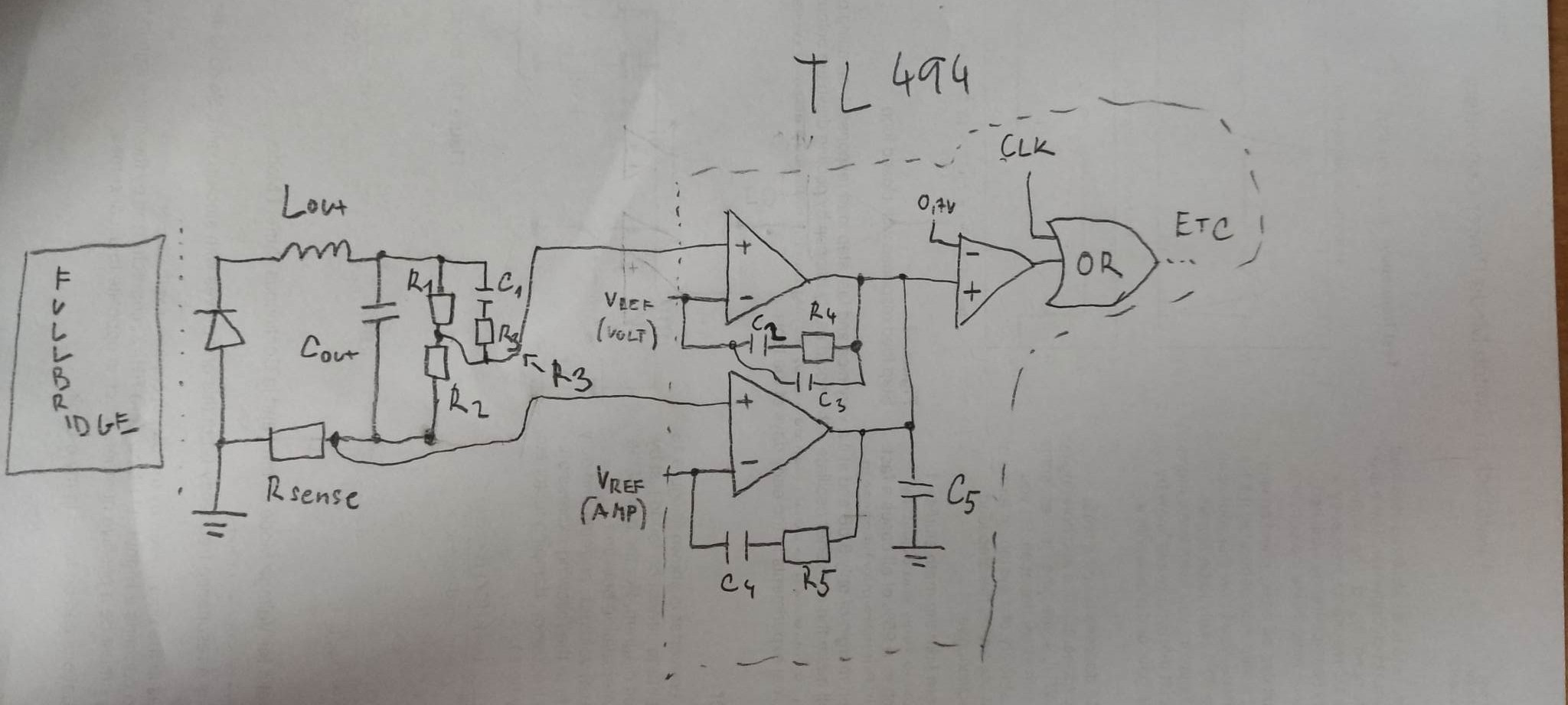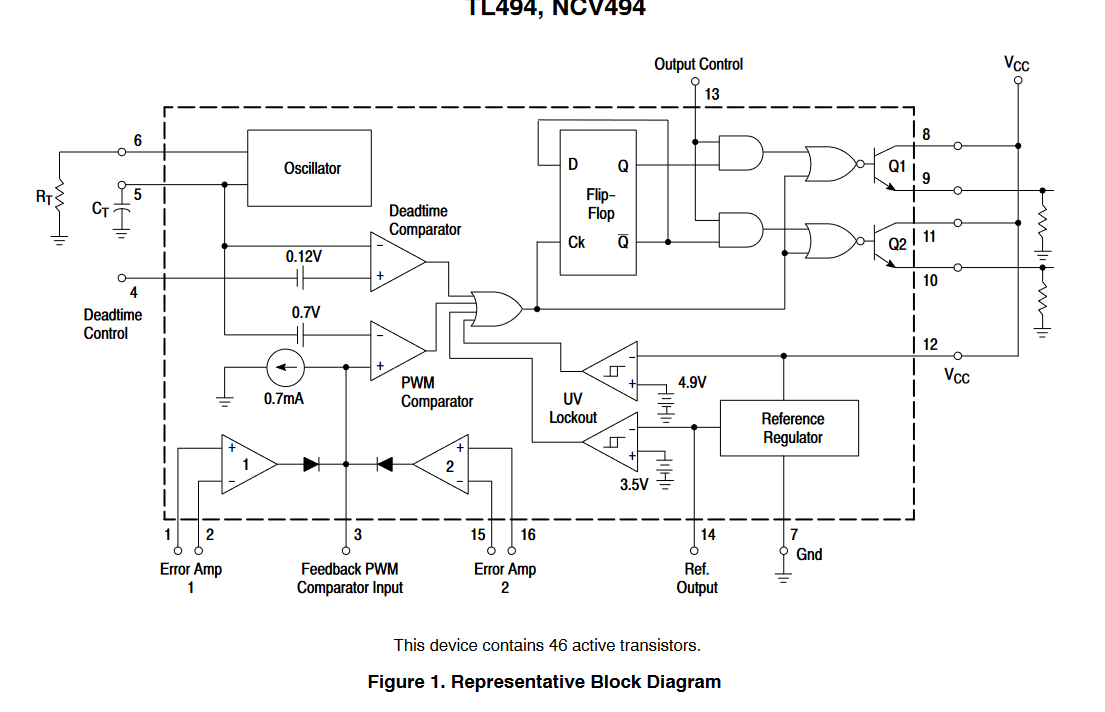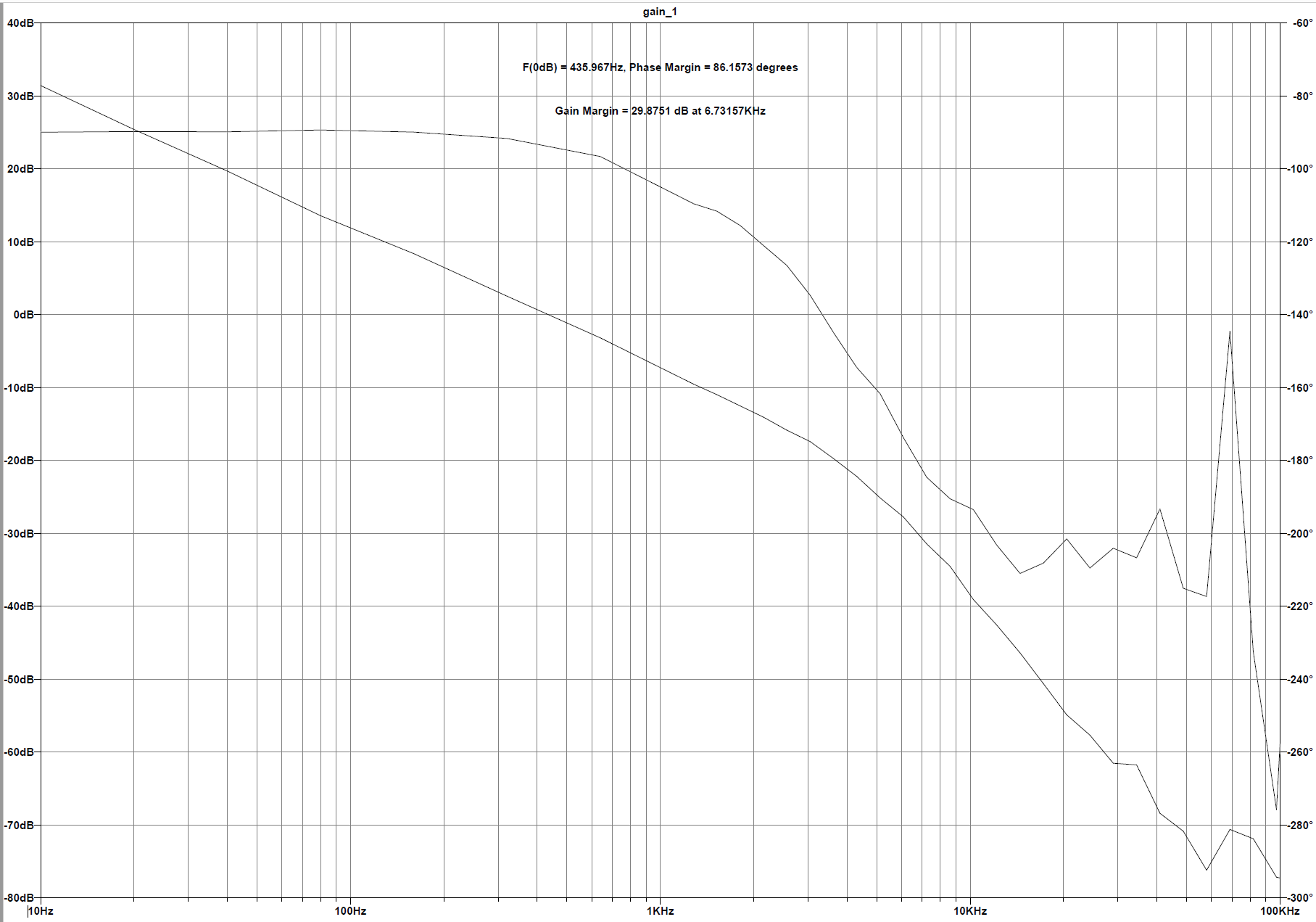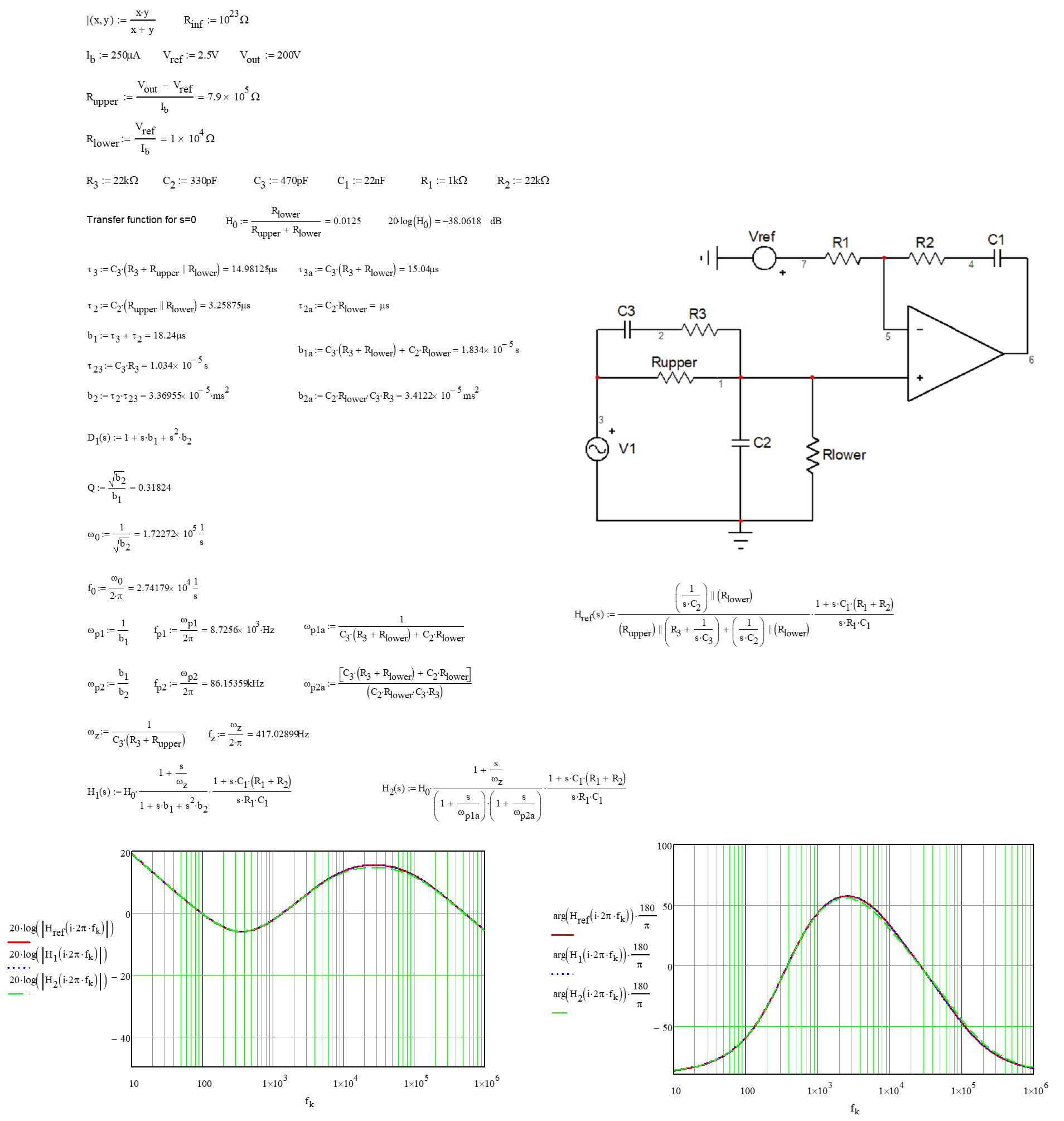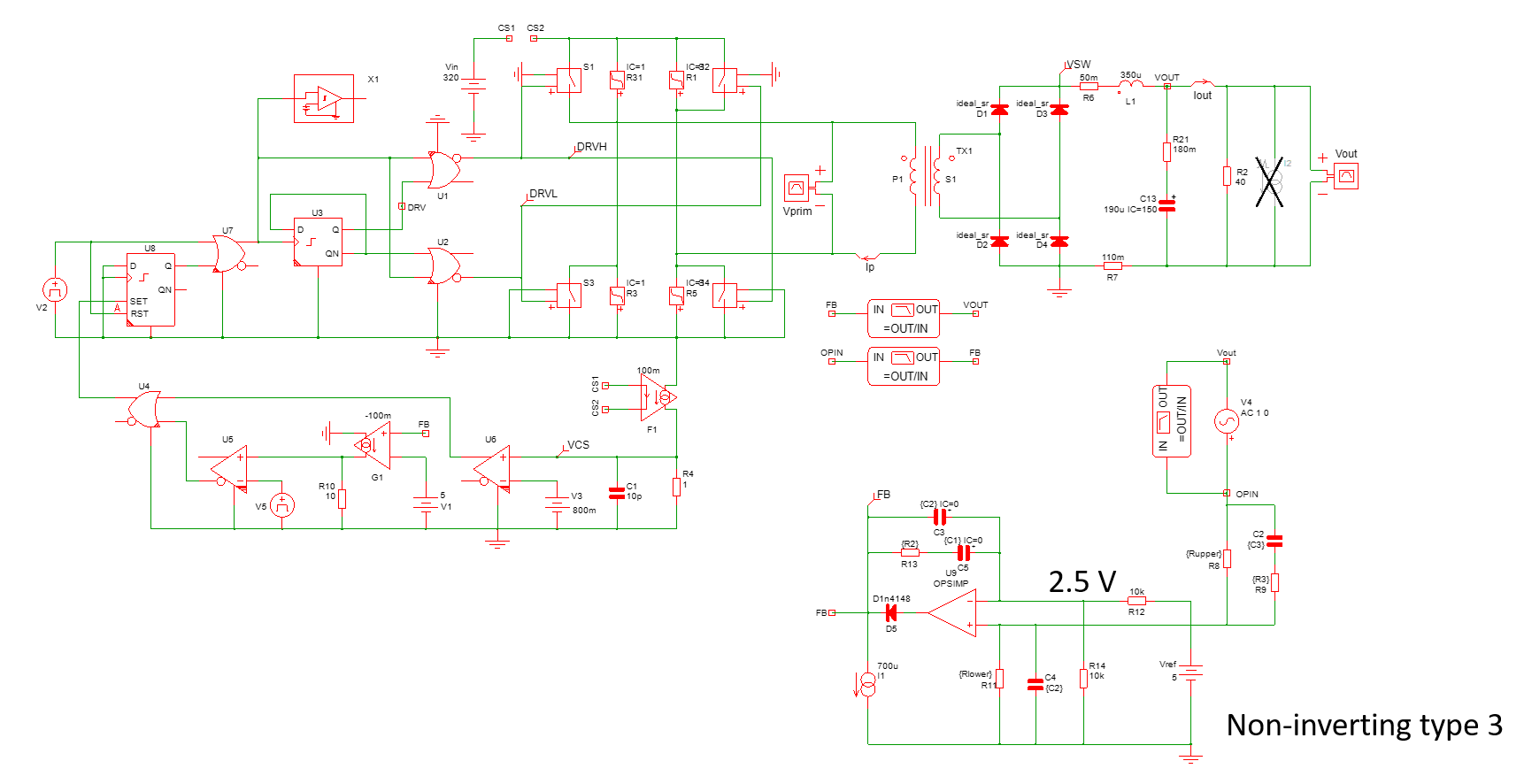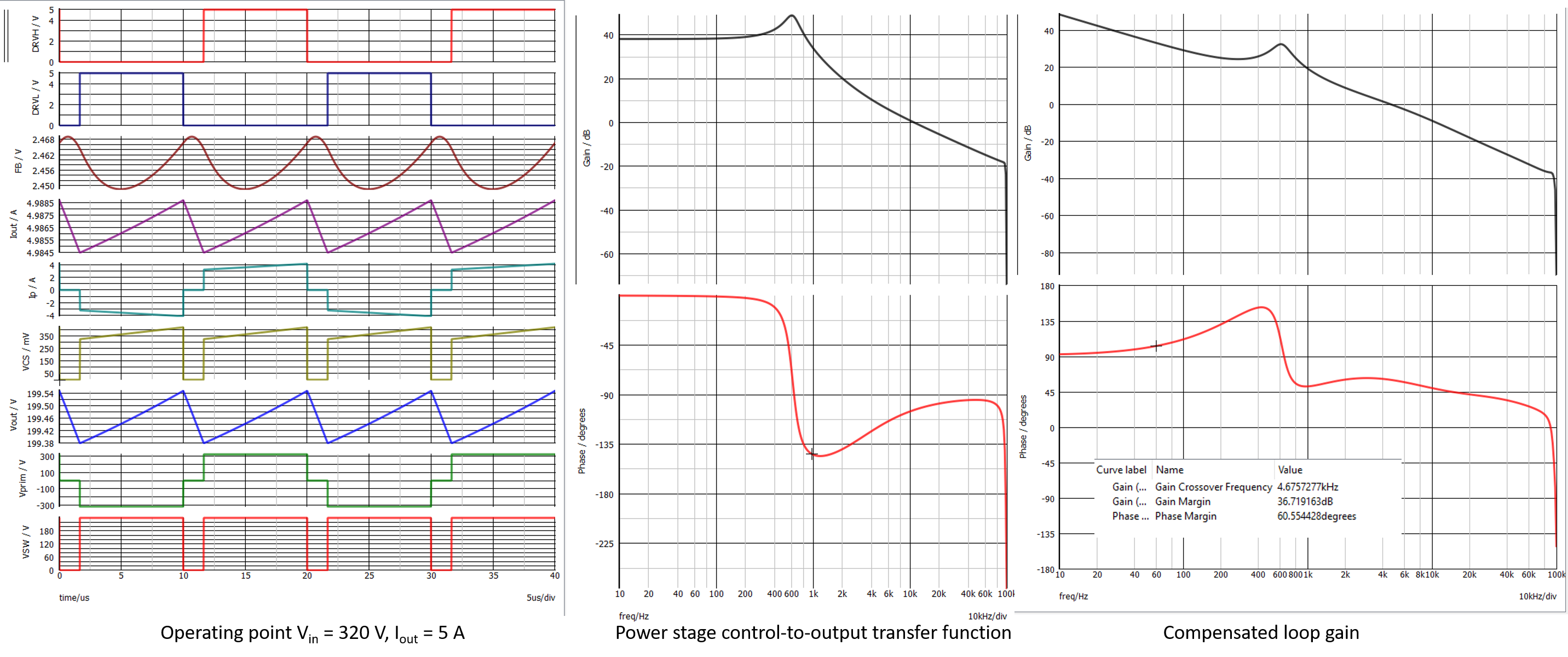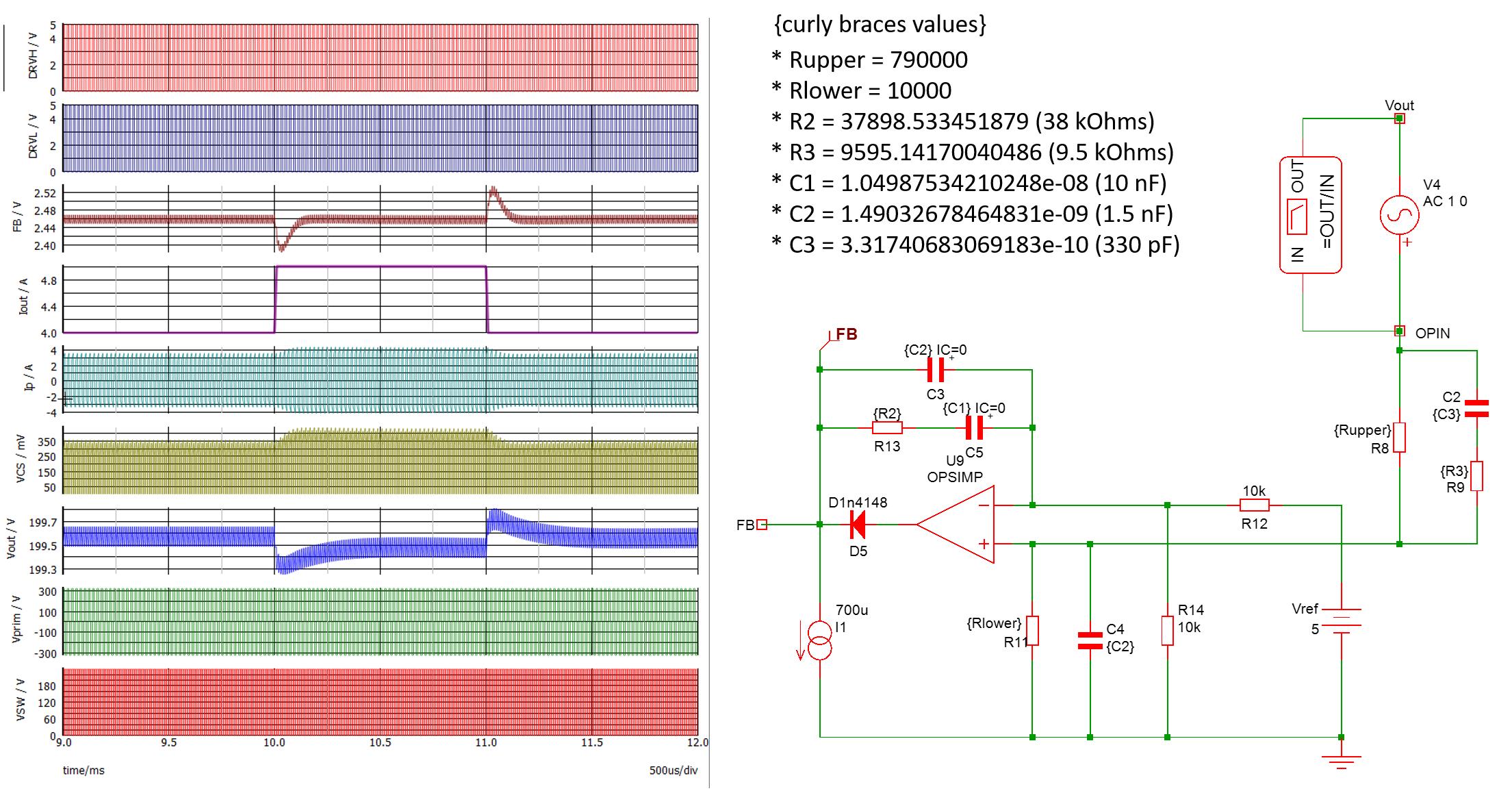I am trying to make a homebrew power supply. It works at the moment, but compensation is not done yet.
Can someone help me to calculate and select the right poles and zeros? VCM is at error op-amp 1, curent mode at error op-amp 2.
Reference voltage is set at negative input by potentiometer (Vset), feedback voltage is fed to positive input (Vsense). When the output of the error op-amp is higher than 0.7 V -> TLT494 hald clock signal, so feedback needs to be connected to +Vin to maintain negative feedback.
I have tried to set it without calculations, but I am not able to find the correct combination that will work at variable loads.
The PSU is 0-200 V, 5 A. The transformer is noisy; when values are not set properly, the transformer fizzes, or makes a high-frequency noise. When it's set correctly it works and is quiet, but when the load changes it starts fizzing.


